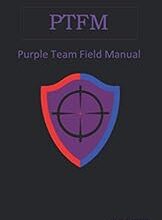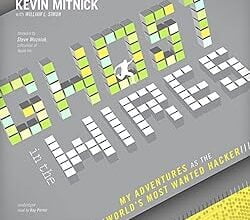Review of The Shellcoder's Handbook: Discovering and Exploiting Security Holes 2nd Edition
by Chris Anley, John Heasman, Felix Lindner, and Gerardo Richarte

Ready to dive deep into the world of exploit development? The Shellcoder’s Handbook: Discovering and Exploiting Security Holes 2nd Edition by Chris Anley, John Heasman, Felix Lindner, and Gerardo Richarte is your go-to guide for mastering the art of finding and exploiting software vulnerabilities.
This book contains in-depth knowledge on writing shellcode, reverse engineering, and developing sophisticated exploits. Whether you’re an advanced security researcher or a penetration tester, this handbook offers invaluable insights to elevate your cybersecurity game. Millennials and tech-savvy individuals will find this guide engaging because it combines detailed technical knowledge with practical, hands-on examples.
If you’re passionate about pushing the boundaries of cybersecurity and eager to enhance your skills, The Shellcoder’s Handbook is the perfect companion on your journey. Let’s explore why this book is an essential read for anyone serious about exploit development and software security!
About the Authors
Chris Anley is a renowned expert in security research and exploit development. With a rich background in discovering critical vulnerabilities and creating effective exploits, Anley has significantly contributed to the field of cybersecurity. His work in penetration testing and vulnerability assessment has set new standards for the industry.
John Heasman brings extensive experience in security research, particularly in the areas of kernel-mode and virtualization-based security. Heasman’s deep technical knowledge and innovative approaches have been instrumental in uncovering some of the most complex security flaws, making his insights invaluable to the cybersecurity community.
Felix Lindner, also known as “FX,” is a celebrated figure in the world of cybersecurity and exploit development. With a career spanning over two decades, Lindner has led numerous groundbreaking projects in reverse engineering and software security. His expertise in analyzing and exploiting complex systems is well-recognized globally.
Gerardo Richarte is a distinguished security researcher known for his exceptional skills in exploit development and reverse engineering. Richarte has contributed significantly to cybersecurity education, sharing his knowledge through various publications and training programs. His innovative techniques and in-depth analyses have greatly advanced the field.
Together, Anley, Heasman, Lindner, and Richarte combine their extensive knowledge and experience to create a comprehensive guide in “The Shellcoder’s Handbook.” Their collective expertise ensures that readers gain valuable insights into exploit development, making complex concepts accessible and practical for both novices and seasoned professionals in cybersecurity. Their contributions to cybersecurity education and their other relevant works further underscore their commitment to advancing the field and mentoring the next generation of security experts.
Overview of the Book
The Shellcoder’s Handbook: Discovering and Exploiting Security Holes 2nd Edition is a detailed and practical guide aimed at helping cybersecurity professionals master the art of exploit development. The book is meticulously structured to provide readers with the technical skills and insights needed to uncover and exploit vulnerabilities in software systems.
Central Themes and Structure: The book is divided into several sections, each focusing on a critical aspect of exploit development. The authors begin with an introduction to the fundamentals of security vulnerabilities and exploitation, setting the stage for more advanced topics. This ensures that readers have a solid foundation before diving into complex concepts.
- Writing Shellcode: One of the core themes of the book is writing shellcode, the small pieces of code used as payloads in exploits. The authors provide detailed instructions and examples, covering various architectures and operating systems. This section is invaluable for understanding how to create effective and reliable shellcodes.
- Reverse Engineering: Another key focus is reverse engineering, which involves analyzing software to understand its functionality and identify vulnerabilities. The book covers essential tools and techniques for reverse engineering, enabling readers to dissect and analyze software components effectively.
- Developing Exploits: The book delves into the process of developing exploits, from identifying vulnerabilities to creating working exploits. It covers various types of vulnerabilities, including buffer overflows, format string vulnerabilities, and race conditions. The authors provide step-by-step guidance and real-world examples to illustrate these concepts.
Practical Applications and Techniques: Throughout the book, the authors emphasize practical applications and real-world scenarios. They include numerous examples and case studies that demonstrate how to apply the techniques discussed. These practical insights help readers understand how to use their skills in real-world situations, making the material more engaging and relevant.
Balancing Technical Detail with Actionable Advice: The Shellcoder’s Handbook excels at balancing deep technical detail with actionable advice. The authors ensure that readers are not only exposed to the theoretical aspects of exploit development but also equipped with practical strategies to tackle real-world challenges. This blend of theory and practice makes the book an invaluable resource for anyone looking to improve their exploit development skills.
In summary, The Shellcoder’s Handbook offers a comprehensive education in discovering and exploiting security holes. Its structured approach, combined with detailed examples and practical exercises, provides readers with the knowledge and skills needed to excel in the field of cybersecurity. Whether you are a novice or an experienced professional, this book is a must-read for mastering the complexities of exploit development.
Key Highlights
The Shellcoder’s Handbook is packed with insightful chapters and sections that significantly contribute to understanding exploit development and cybersecurity. Here are some of the key highlights:
Writing Shellcode: One of the standout sections of the book is dedicated to writing shellcode. This chapter provides in-depth coverage of creating small, effective payloads used in exploits. It includes detailed instructions for writing shellcodes on different architectures, including x86, x64, and ARM. The authors explain various techniques for avoiding detection and ensuring reliability, making this section invaluable for anyone looking to master shellcode development.
Reverse Engineering: The book’s coverage of reverse engineering is another highlight. This section teaches readers how to dissect software to understand its inner workings and identify potential vulnerabilities. The authors introduce essential tools and techniques, such as disassemblers and debuggers, and provide step-by-step guidance on analyzing software components. Real-world examples help illustrate the practical applications of these techniques, making complex concepts more accessible.
Advanced Exploit Development: For those looking to dive deeper into exploit development, the book offers advanced techniques and strategies. This section covers a wide range of vulnerabilities, including buffer overflows, format string vulnerabilities, and race conditions. The authors provide detailed explanations and real-world case studies to demonstrate how these vulnerabilities can be exploited. This hands-on approach helps readers understand the nuances of developing sophisticated exploits.
Practical Applications and Real-World Examples: Throughout the book, the authors emphasize the practical applications of the techniques discussed. They include numerous real-world examples and case studies that show how to apply the knowledge gained in actual scenarios. These useful insights are particularly beneficial for readers looking to understand how to use their skills in real-world settings.
Unique Insights and Innovative Techniques: The authors bring their extensive experience and expertise to the table, offering unique insights and innovative techniques that set this book apart. They discuss cutting-edge methods for exploiting vulnerabilities and provide advanced tips for bypassing security mechanisms. These insights are crucial for staying ahead in the ever-evolving field of cybersecurity.
Detailed Step-by-Step Guidance: One of the book’s strengths is its detailed, step-by-step guidance. Each chapter breaks down complex concepts into manageable steps, making it easier for readers to follow along and understand the material. This approach ensures that even the most challenging topics are accessible and engaging.
Focusing on these key highlights, The Shellcoder’s Handbook provides a rich and comprehensive learning experience. The combination of foundational techniques, advanced methods, practical applications, and real-world examples makes this book an invaluable resource for anyone serious about mastering exploit development and enhancing their cybersecurity skills.
Why It’s Recommended for Cybersecurity Professionals
The Shellcoder’s Handbook is an invaluable resource for cybersecurity professionals at all levels, from novices to experienced practitioners. Here’s why it stands out:
Utility for Novices: This book serves as an excellent introduction to exploit development for those new to cybersecurity. It begins with foundational concepts, offering clear explanations and detailed instructions on writing shellcode and reverse engineering. These basics are crucial for building a solid understanding of how software vulnerabilities can be exploited. The step-by-step guidance ensures that even beginners can grasp complex topics and apply what they’ve learned.
Advanced Insights for Experienced Professionals: Even seasoned cybersecurity experts will find the book highly beneficial. It delves into advanced topics such as sophisticated exploit development techniques and bypassing modern security mechanisms. The detailed analysis of vulnerabilities, including buffer overflows, format string vulnerabilities, and race conditions, provides deep insights that can enhance the skills of experienced professionals. The authors’ unique insights and innovative techniques help keep experienced practitioners at the cutting edge of exploit development.
Practical Strategies for Discovering and Exploiting Vulnerabilities: One of the book’s greatest strengths is its focus on practical strategies. It doesn’t just teach theory; it provides actionable advice on discovering and exploiting real-world vulnerabilities. The numerous examples and case studies included in the book demonstrate how to apply the techniques discussed, making the material relevant and practical. This hands-on approach ensures that readers can directly implement what they’ve learned in their work environments.
Hands-On Knowledge and Tools: The Shellcoder’s Handbook has hands-on exercises that reinforce the theoretical knowledge presented. These exercises allow readers to practice developing exploits in a controlled setting, helping to solidify their understanding and improve their skills. Additionally, the book introduces various tools essential for reverse engineering and exploit development, such as disassemblers and debuggers, providing detailed guidance on how to use them effectively.
Ethical Considerations: The authors do not shy away from discussing the ethical implications of exploit development. They emphasize the importance of understanding and respecting legal boundaries and ethical responsibilities. This focus on ethics is crucial for maintaining professional integrity and ensuring that the skills learned are used responsibly. By addressing ethical considerations, the book helps readers navigate the complex moral landscape of cybersecurity.
Improving Exploit Development Skills: By combining foundational knowledge with advanced techniques, The Shellcoder’s Handbook offers a comprehensive education in exploit development. It helps professionals improve their ability to identify and exploit vulnerabilities, which is essential for effective penetration testing and security research. The book’s practical benefits extend beyond just learning; it equips readers with the skills needed to protect systems by understanding and mitigating potential threats.
In summary, The Shellcoder’s Handbook is a must-read for cybersecurity professionals looking to deepen their understanding of exploit development. Its blend of theoretical knowledge, practical strategies, hands-on exercises, and ethical considerations makes it an invaluable resource. Whether you are just starting or looking to enhance your existing skills, this book provides the tools and insights needed to excel in the dynamic field of cybersecurity.
Engagement and Learning Path
The Shellcoder’s Handbook provides a strong foundation in exploit development, but continuous learning and practice are essential for mastering these skills. Here are some ways to further your education and apply the techniques from the book:
Join Online Communities: Engage with online forums and communities dedicated to cybersecurity and exploit development. Platforms such as Reddit’s r/netsec, Stack Overflow, and specialized forums like BugBustersUnited offer valuable opportunities to discuss concepts from the book, ask questions, and share experiences. These communities provide diverse perspectives and real-world insights that can deepen your understanding and keep you updated on the latest trends and techniques.
Participate in Workshops and Webinars: Look for workshops, webinars, and training sessions focused on exploit development and cybersecurity. Events hosted by organizations like SANS Institute, Offensive Security, and local cybersecurity meetups offer hands-on labs and interactive sessions that complement the material covered in the book. Participating in these events allows you to practice techniques in a guided setting and learn from industry experts and peers.
Set Up Controlled Lab Environments: Practice the techniques outlined in the book by setting up your lab environment. Use platforms like Hack The Box, TryHackMe, or your virtual lab to create a controlled setting to experiment with exploit development tools and strategies safely. This hands-on practice is crucial for internalizing the knowledge and developing the skills needed to become proficient in exploit development.
Engage in Continuous Learning: Cybersecurity is a rapidly evolving field with constant advancements and emerging threats. To stay current, continuously seek out new information and training opportunities. Read industry news, subscribe to cybersecurity blogs, and follow research papers to keep up-to-date. Books like “The Shellcoder’s Handbook” should be part of a broader learning journey that includes a variety of resources and learning methods.
Networking and Mentorship: Connect with other cybersecurity professionals through conferences, meetups, and professional organizations. Networking can lead to mentorship opportunities, collaborations, and knowledge sharing. Building relationships with experienced practitioners can provide guidance and support as you advance in your career.
By viewing The Shellcoder’s Handbook as an integral part of your ongoing education, you position yourself for growth and success in the field of exploit development and cybersecurity. Engage actively with the community, participate in learning events, and practice regularly to hone your skills and stay ahead in the ever-evolving cybersecurity landscape.
Conclusion and Call to Action
The Shellcoder’s Handbook by Chris Anley, John Heasman, Felix Lindner, and Gerardo Richarte is an essential resource for anyone committed to mastering exploit development. The book provides comprehensive guidance on writing shellcode, reverse engineering, and developing sophisticated exploits, making it invaluable for both novices and experienced cybersecurity professionals.
Key takeaways from the book include:
- A solid foundation in the fundamentals of exploit development.
- Practical strategies for discovering and exploiting real-world vulnerabilities.
- Hands-on exercises and detailed examples that bridge the gap between theory and practice.
- Ethical considerations and best practices for responsible security research.
We encourage the BugBustersUnited community to share their thoughts and experiences with The Shellcoder’s Handbook. How has it influenced your approach to cybersecurity? What insights and techniques have you found most valuable? Your feedback helps create a more prosperous learning environment for everyone.
Continuous learning and staying updated with the latest cybersecurity strategies are crucial in this rapidly evolving field. By engaging with resources like this book and participating in community discussions, you can keep your skills sharp and stay ahead of emerging threats.
Join the conversation and tell us how The Shellcoder’s Handbook has impacted your cybersecurity journey. Together, we can build a knowledgeable, supportive community that excels in exploit development and cybersecurity. Let’s work together to deepen our understanding and apply advanced techniques to protect our systems more effectively.



